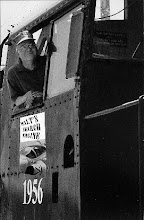Remember Pearl Harbor

By Walter Haan, www.war-books.com
In nine days, on December 7th, Pearl Harbor Day will be remembered. The infamous attack that took America by surprise (except perhaps for those in the White House) stunned and rallied the nation. Within 3 days, we were officially at war with Japan, Germany and Italy.
Hollywood's reaction to the equally surprising attacks on September 11, 2001 in New York City and Washington, DC by Muslim extremists and the 1941 Pearl Harbor attack by the Japanese were quite different. Hollywood treaded carefully after 9/11 and didn't release any dramatizations about the attacks right away.
The Pearl Harbor attack was handled quite differently by movie studios. They were stumbling over themselves to get movies made about Pearl Harbor. Republic Studios won the race for the first film about the attack because it already had a film in production about Japanese agents doing dastardly deeds in the Philippines. After Pearl Harbor, the studio simply rewrote portions of the script and renamed the picture, Remember Pearl Harbor. The film was released on May 18, 1942. The final plot was that on the eve of Pearl Harbor, an American soldier/airman in the Philippines gets mixed up with a group of Japanese agents. When he learns of the attack, he changes his behavior and exposes the espionage ring, and then gives his life for his country by crashing his plane into a Japanese troopship. The Philippines was an American territory at that time.
The film starred Donald Barry who later became known as Don "Red" Barry because of his starring in Red Ryder westerns. The picture, in black and white, naturally, was 75 minutes long and directed by Joseph Santley. The poster for the film is shown here. --Copyright 2007 by Walter Haan, www.war-books.com

